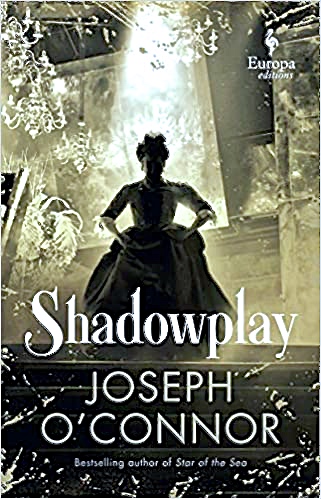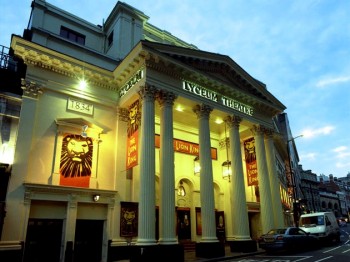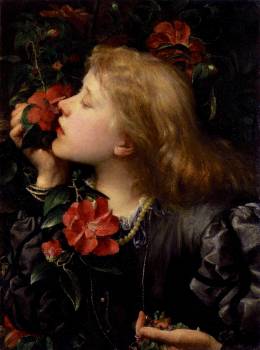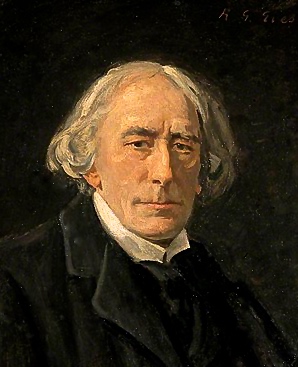Note: Joseph O’Connor was WINNER of the Irish Book Award, Eason Novel of the Year in 2019, for SHADOWPLAY. He was also WINNER of the Irish PEN Award for his Outstanding Contributions to Irish Literature, 2012.
“Out of the gathering swirls of mist roars the hot black monster, screeching and belting its acrid, bilious smoke, a fetor of cordite stench. Thunder and cinders, coalman and boilerman, black cast iron and white hot friction, rattling on the roadway of steel and olden oak as dew-drops sizzle on the flanks. Foxes slink to lairs. Fawns flit and flee. Hawks in the yews turn and stare.”
 From the sensual and fully imagined opening paragraphs of this extraordinary work to the intensely personal characterizations of the people who share their stories here, Irish author Joseph O’Connor creates worlds so vibrant that many readers will feel as if they, too, have become part of this novel, its period, and its subjects. O’Connor does not hold back here, creating three artists of the literary and theatrical worlds of the late nineteenth and early twentieth centuries whose very lives reflect the Gothic intensity of the age with all its private hopes and failures. Henry Irving, world famous actor; Bram Stoker, theatre manager and frustrated writer; and Ellen Terry, highest paid and most beloved actress in England, all speak to the reader so intimately that their often difficult lives, with all the aches and longings one usually holds inside, begin to emerge in what feel like “private” confidences between the characters and the reader. Sharing the characters’ lives from their early adulthood until, in two cases, their deaths when they are in their sixties, the author allows the reader to share even their self-judgments and their judgments of each other when their public lives are at an end, which gives a broader perspective to their stories.
From the sensual and fully imagined opening paragraphs of this extraordinary work to the intensely personal characterizations of the people who share their stories here, Irish author Joseph O’Connor creates worlds so vibrant that many readers will feel as if they, too, have become part of this novel, its period, and its subjects. O’Connor does not hold back here, creating three artists of the literary and theatrical worlds of the late nineteenth and early twentieth centuries whose very lives reflect the Gothic intensity of the age with all its private hopes and failures. Henry Irving, world famous actor; Bram Stoker, theatre manager and frustrated writer; and Ellen Terry, highest paid and most beloved actress in England, all speak to the reader so intimately that their often difficult lives, with all the aches and longings one usually holds inside, begin to emerge in what feel like “private” confidences between the characters and the reader. Sharing the characters’ lives from their early adulthood until, in two cases, their deaths when they are in their sixties, the author allows the reader to share even their self-judgments and their judgments of each other when their public lives are at an end, which gives a broader perspective to their stories.
Though this is a “Gothic” novel, with all the emotional intensity and romance of that genre, most of the action which occurs in this novel actually happened, and the characters were real, living humans. By toggling the time frames back and forth among events from the early 1900s, to some from the late 1880s, and eventually the conclusion in 1912, author O’Connor allows the reader to see the long-term effects of many happenings and decisions. At the same time, however, O’Connor also suggests “unknown forces” lurking beneath the surface of those events. Theater manager Bram Stoker, the creator of the Dracula story, spends his whole life working on it. Because he was casual about getting it copyrighted, however, parts were occasionally stolen and published by other authors, and Stoker himself never lived to enjoy its success. Author O’Connor acknowledges the Dracula story here by including two named characters from Stoker’s Dracula story within this novel: The first, Jonathan Harker, works for Bram Stoker at the theatre. The other, Mina, the ghost of “Mina’s Lair,” occupies a secret hideout in the attic above the theatre where a murder took place thirty years ago.
Despite the supernatural references and images, O’Connor focuses primarily on the lives of the three main characters and their roles in developing London’s theatre. Actor Henry Irving, theatre manager Bram Stoker, and actress Ellen Terry all work at the Lyceum theatre, which is owned by Henry Irving. An architectural wreck when Irving buys it, the theatre is slowly being restored from the days when tramps slept in the alcoves, the portico was used as a latrine, and feral cats occupied virtually every other space. The costs of restoring this theatre are incredible. A difficult man with a monstrous ego, Irving, often called “Chief,” has hired Bram Stoker to manage and run the theatre but does not give him the power to control major issues, especially financial ones. Some obvious cost-cutting issues are rejected by the Chief, even though they frequently put the theatre in debt. He insists on running the show and on controlling every aspect – even the selection of plays – in which he, of course, will be the star. Often cruel to his employees, he also mocks them and belittles their efforts, considering himself above everyone else at the theatre. It is no surprise that modern critics often consider Henry Irving to have been the inspiration for Stoker’s Count Dracula.
Ellen Terry, married at sixteen, mother of two by two different fathers, and the most popular and most beautiful actress in England, is sometimes a peacemaker, saying of Irving, that “Everyone has a Mr. Hyde, another version of the self,” and that we all carry our choices around with us. She adds that “there is, too, a kind of shadowland where the Other always lives. Or at least never dies…Hard to stumble into happiness if you don’t leave your shadowland behind. Harry [Irving] never did, quite. Neither did Bram.” As for Bram Stoker, he needs a place to work on his writing, and when he hears about “Mina’s Lair” in the theatre’s attic, he demands to see it. Inside he finds trunks, caskets, carpets, old props, and, surprisingly, a long box with odd symbols on top, a box which he discovers is filled with dirt. He is so inspired by the site that he decides he will do his writing there, but he falls asleep, and in his nightmare he is confronted by a hooded figure with a diamond crown, scepter, and orb. The figure screams at the people present in the dream to go “back to their tombs,” and announces, ominously, “This man belongs to me.”
Despite all the thick, rich, and sensual details, most of the action itself is more ordinary, and there is surprisingly little over-arching plot. None is needed or wanted, however. These characters are actors, living a busy “shadow” life, as if in a “shadowplay.” All are uncertain about their sexuality, living in an environment in which no one talks about it or knows what is “normal.” Jack the Ripper is haunting Whitechapel and surrounding areas. Henry Irving’s friend Oscar Wilde has been sentenced to two years at hard labor in prison for being gay, and the ghostly Mina observes Bram Stoker as “One who burns fires. Everything in him dried up and shouldered out by anger, an arid Arizona of the heart.” Every character here is living with shadows, even including the author, an Irishman who tells stories from England about real people he never knew and true events he never lived. Fortunately, the author allows the reader to become part of this special shadowplay, feeling the sadness and loneliness of living, enjoying the rare triumphs, and experiencing on the highest level, all the aches, longings, hopes, dreams, and disappointments of shadow-puppets much like ourselves. Truly unforgettable.
Photos. The author’s photo appears on https://en.wikipedia.org
The Lyceum Theatre is from https://www.timeout.com
Theatre manager and author Bram Stoker: http://revistaunica.com.mx
Ellen Terry, later Dame Alice Ellen Terry, as a young woman. http://revistaunica.com.mx/
Sir Henry Irving, the first actor to be granted a title. https://en.wikipedia.org





